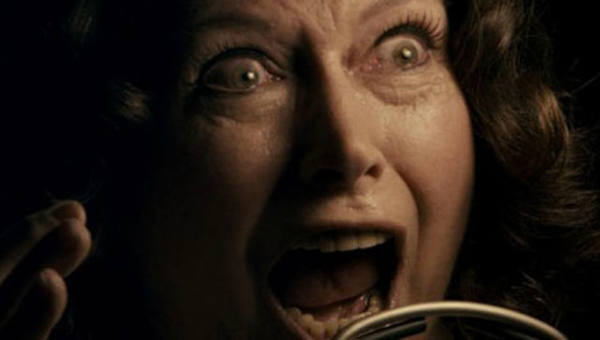Peter Strickland’s debut feature KATALIN VARGA appeared out of nowhere in 2009 and made a refreshing change from the parochial concerns of most first-time British film-makers. Instead of council estate poverty porn, or z-list celeb-fuelled am-dram comic parades, or invasions of cockney gangster geezer zombies, Strickland took himself off to Transylvania with a small amount of personal inheritance cash to produce a Peckinpah-esque revenge tragedy as if re-filtered through a Tarkovsky spectrum, complete with Nurse With Wound soundtrack and Hungarian-speaking cast. Danny Dyer was not involved.
KATALIN VARGA was particularly notable for an extensive sound design, which heightened eastern European landscapes into seethingly claustrophobic plains and forests. Strickland’s masterly follow-up further pursues this interest in audio within cinema, and how our hearing can be the most unsettling and self-deceptive of our senses.

The film is set almost entirely within the confines of a 1970s Italian dubbing studio, the Berberian of the title, where an Argento-alike director named Santini is plotting out the final stages of his latest horror atrocity, a witch-slaughter fable entitled The Equestrian Vortex. Into this stifling maelstrom of egotistical one-upmanship and actress-baiting misogyny comes Gilderoy, a timid English sound artist beautifully played by Toby Jones.
Santini maintains he is making a work of pure art, but Gilderoy sees only the horror…
Gilderoy seems bewildered as to why he has been specifically chosen to construct foley tracks for the horrific visions depicted in The Equestrian Vortex, of which we never see a glimpse bar some authentically overwrought opening titles, and feels even more uncomfortable pulping endless piles of overripe fruit to suitably convey the intensity required to audibly accompany scenes of horrific violence. Santini maintains he is making a work of pure art, but Gilderoy sees only the horror which he feels forced into duplicating, and quietly yearns to return to his home-life of public information films and suppers cooked by mother.
BERBERIAN SOUND STUDIO manages to be both invocation of seventies European horror cinema and head-splintering personality meltdown breaking down the very barriers of cinema, akin to PERFORMANCE or MULHOLLAND DRIVE, but arguably going much further into its self-created dementia than either of those masterpieces. It also feels like the first cinematic document which explores the generally musical theme of “hauntology”, which aims to reanimate our shared collective pasts into the futures they once offered. It’s apt, therefore, that Broadcast, one of hauntology’s leading musical proponents, provide a superbly evocative soundtrack and fitting that the film is dedicated to Trish Keenan of Broadcast who died last year.
httpvh://www.youtube.com/watch?v=pKG63WoOFGI


An excellent piece of work, I thought, especially for fans of film as a medium. Not perfect perhaps – some of its ambitious ideas about aren’t fully realised – but Gilderoy’s descent in to madness is vivid and superbly wrought. It would make a fine companion piece with Michael Powell’s PEEPING TOM as a double bill of meta-cinematic horror.
Left it hanging a bit too much in some sort of Lynchian limbo for my liking, but otherwise a great film. Had me engrossed throughout.
I enjoyed reading this review, bar this one sentence, which flummoxed me, and nearly had me reaching for The Collected Works of C. G. Jung:
It also feels like the first cinematic document which explores the generally musical theme of “hauntology”, which aims to reanimate our shared collective pasts into the futures they once offered.
Any light shed would be gratefully received, as this proposition is a little too tightly packed for me to unwrap…
Following what Gavin says about the descent into madness (and also what my own review says), for all that the foley sounds like what it isn’t and like what it is supposed to be, this depiction of such a descent is still a million miles from, say, an actual experience of psychosis (on which I can speak):
My review references Black Swan, subconsciously because it is no step further on than a lesbian lover who does not exist – or a belief that there was lesbian sex with a real person, but maybe no such sex took place. Not that I would necessarily want anyone to attempt a literal depiction, but madness just ain’t like that, any more than Nash’s spooky non-existent government agents and sheds full of trash: so, when one thing (sound production and engineering) is portrayed with naturalism (even if squashed melon / marrow doesn’t really make that noise), going through the stereotyped ‘things are beginning to slip’ routine makes, for me, such a big mismatch.
I also referenced 8½, and would suggest that Fellini then and there knows more about madness than Peter Strickland shows himself to do here.